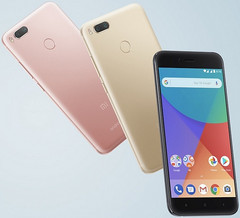Xiaomi released the Mi A1 towards the end of 2017—the device was the first Android One phone to be made by any of the top, mainstream OEMs. The A1 did extremely well commercially, playing no small part in Xiaomi's rise to becoming one of the top five smartphone brands by the end of the year. According to CEO Lei Jun, the company will continue on that path this year by bringing Android One to the budget segment.
"Yes, we plan to have more Android One devices," Lei Jun was quoted as saying. "Some of our users in India seem to like stock Android, and we are willing to bring in more devices with Android One including the Redmi series.“
Xiaomi devices have become almost synonymous with the MIUI skin they ship with. The skin is rather divisive, with its aggressive RAM management and overly colorful UI being some of the major quibbles users have with it. The company's budget Redmi series, on the other hand, is its biggest cash cow. Devices like the Redmi Note 4, for example, shipped millions of units. Bringing stock Android to that line of smartphones is an excellent move from a business perspective, as it solves the biggest problem with Xiaomi devices—that of software.
























